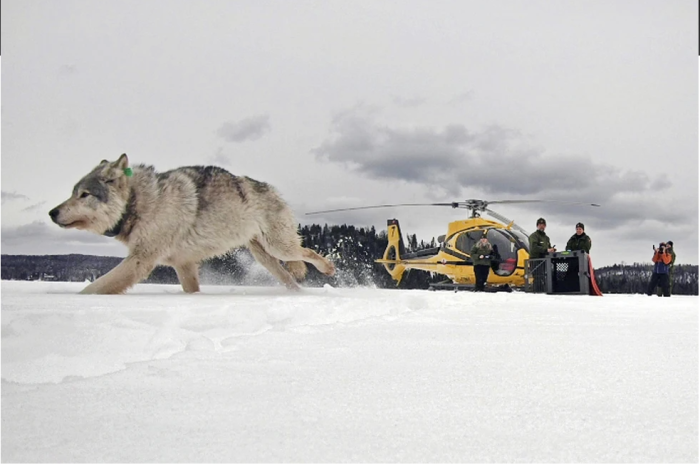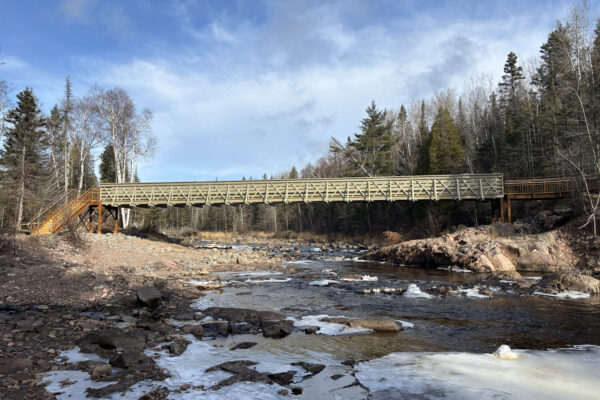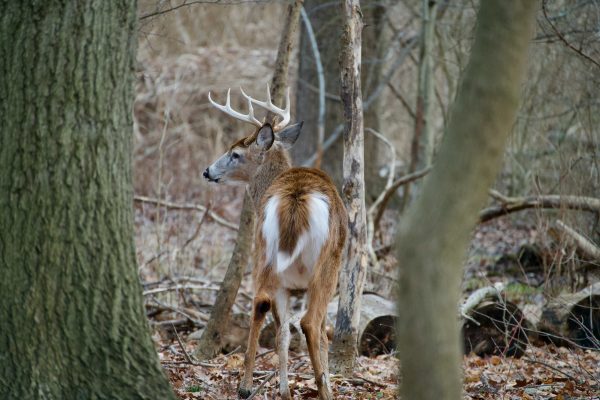Isle Royale wolf populations remain stable, moose populations decline
Researchers forced to cut short an annual survey of wildlife on the remote Lake Superior island of Isle Royale this winter due to unusually warm weather announced Tuesday that they managed to gather data that shows the wolf population is stable.
Researchers typically conduct aerial surveys of the island to develop population estimates and observe animal behavior. The island doesn’t have a landing strip so the scientists use skiplanes that can land on the ice surrounding it.
A team led by Michigan Tech University researchers was two weeks into this year’s seven-week survey in January when unusually warm temperatures left the ice around the island unsafe for their planes to land. They were forced to evacuate the island and could not return.
Data the team gathered before they left shows the wolf population stands at 30 animals, down from 31 animals last year but up from 28 in the winter of 2022. The scientists said they believe the wolves have divided themselves into four packs, with one pack numbering at least 13 wolves. At least one wolf appeared to be living alone.
The moose population, meanwhile, stood at 840, down 14% from last year. Overall, the moose population has declined by almost 60% since 2019, when the population peaked at a little more than 2,000 animals.
In past years, most moose died from starvation, the researchers said. Moose can eat up to 40 pounds of vegetation daily, and with low wolf numbers, the population grew unchecked, and the creatures ate themselves out of food.
But this year’s decline is likely linked to wolf predation, they said.
“Predation by wolves seems to be an important factor contributing to the decline in moose abundance,” according to researchers in a recent report.
Recruitment rates of moose calves have continued to decline, contributing to the decreased moose population, the team said. Researchers said the recruitment rate is 5.5%, which is higher than last year’s estimate of 1.7% but still substantially lower than the long-term average recruitment rate of 13%.
“That low recruitment rate partly explains why the moose population has continued to decline over the past year,” the report said.
WTIP’s Kalli Hawkins contributed to this report.














